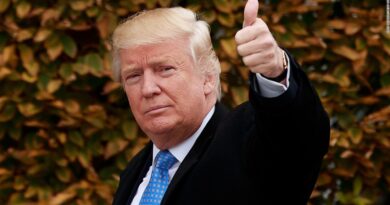Documents Link Potential Covid Patient Zero to U.S.-Funded Research in Wuhan
One of the first Wuhan researchers reportedly sickened with Covid in fall 2019, Ben Hu, was getting U.S. financial support for risky gain-of-function research on coronaviruses, according to documents obtained through a Freedom of Information Act request by the transparency advocacy organization White Coat Waste Project.
The funding came in three grants totaling $41 million, doled out by USAID and the National Institute of Allergy and Infectious Diseases, or NIAID, the agency then headed by Dr. Anthony Fauci. Hu is listed as an investigator on the grants.
The news that U.S. intelligence had learned that three Wuhan Institute of Virology lab workers had been hospitalized with Covid symptoms in November 2019, significantly before the outbreak at the city’s seafood market, was first reported by the Wall Street Journal in May 2021. But the revelation had curiously little impact on the broader debate over the origin of the pandemic, even as it would invalidate, if confirmed, the claim that the pandemic originated at the Huanan Seafood Wholesale Market when the virus allegedly jumped from an animal to a human. No such animal has been identified, but new reporting by Michael Shellenberger and Matt Taibbi, sourced to three government sources familiar with a State Department investigation, has identified the three lab workers as Ben Hu, Yu Ping, and Yan Zhu. Two of the grants ran from 2014 through 2019. The third was cut off in 2020 by President Donald Trump after the outbreak in Wuhan.
The NIAID and USAID grants list Hu as an investigator in the projects being funded. Hu is a top deputy to Shi Zhengli, known in the virology world as “batwoman” for her work extracting samples of viruses from bats in Chinese caves. The FOIA documents were first obtained by White Coat Waste in 2021 but given new relevance with the reporting of Hu’s involvement.
The Times of London, meanwhile, also recently reported new details about activity in the Wuhan Institute of Virology in the run-up to the pandemic, similarly sourced to three investigators with the U.S. State Department. That report includes allegations about the Wuhan labs’ collaboration with Chinese military scientists, buttressing what had once been dismissed as a fringe conspiracy theory: that the virus was connected to bioweapons research. “In the lead-up to the pandemic, the Wuhan institute frequently experimented on coronaviruses alongside the Academy of Military Medical Sciences, a research arm of the People’s Liberation Army,” the Times reported. “In published papers, military scientists are listed as working for the Beijing Institute of Microbiology and Epidemiology, which is the military academy’s base.”
Much of the focus of the Times investigation is on a virus found in a mine where workers were sickened in 2012, leading to hospitalizations and deaths. Another key question probed by the State Department investigators relates to a project proposed to the Pentagon by Shi and two collaborators, Ralph Baric of the University of North Carolina, and Peter Daszak of EcoHealth Alliance. The proposal, submitted to the Defense Advanced Research Projects Agency, or DARPA, entailed inserting a furin cleavage site into a coronavirus. It was rejected, but speculation remains as to whether some of the research was conducted anyway.
“The investigators spoke to two researchers working at a US laboratory who were collaborating with the Wuhan institute at the time of the outbreak,” the Times reported. “They said the Wuhan scientists had inserted furin cleavage sites into viruses in 2019 in exactly the way proposed in Daszak’s failed funding application to Darpa.” A key hallmark of SARS-CoV-2, the virus that causes Covid-19, is its furin cleavage site (FCS).
“The significance of the fact that ‘patient zero:’ Ben Hu received US funding from NIH and USAID in 2018-2019 is that NIH and USAID support to Hu potentially directly funded the insertion of FCS sequences into SARS-ike coronaviruses that had been proposed in EcoHealth’s/WIV’s unsuccessful 2018 DARPA grant application,” said Dr. Richard Ebright, a molecular biologist and laboratory director at the Waksman Institute of Microbiology. “Just as USAID and NIH support to Shi potentially funded the insertion of FCS sequences into SARS-ike coronaviruses that had been proposed in EcoHealth’s/WIV’s unsuccessful 2018 DARPA grant application.”
Congress has mandated the U.S. government to declassify information related to the pandemic’s origin and the Wuhan Institute of virology by Sunday, June 18.
Correction: June 17, 2023, 11:20 a.m.
The initial version of this story suggested the grants ran through 2021. Two grants ran through 2019, covering the period the researchers were reportedly hospitalized, and a third was cut off in 2020 by President Trump. The story was updated to include comment from Ebright.
This article has been archived for your research. The original version from The Intercept can be found here.


